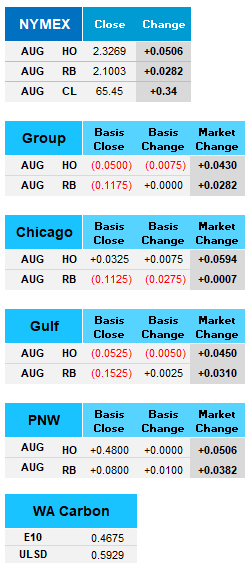Saudi Arabia May Raise August Oil Prices: Saudi Arabia is expected to increase its official selling prices (OSPs) for crude oil exports to Asia in August, potentially reaching the highest levels in four months. This move is driven by tighter supply expectations and geopolitical tensions, particularly in the Middle East. The price hike reflects optimism about demand recovery in Asia, especially from China and India. However, concerns remain about global economic growth and its impact on oil consumption. OPEC+ is also considering further output cuts to stabilize the market. Analysts suggest that the price increase could support Saudi Arabia’s fiscal goals amid fluctuating revenues. The decision will be closely watched by refiners and traders across Asia.
Premiums for Russian Blend Oil: Russian Blend crude oil continues to command strong premiums in the Asian market, particularly from Chinese buyers. In July, China reportedly purchased around 75% of the available blend oil cargoes, reflecting robust demand from independent refiners. These refiners, often called "teapots," are capitalizing on discounted Russian oil amid Western sanctions. Despite geopolitical risks, the steady flow of blend oil crude through the Kozmino port has helped maintain market stability. The premiums are also supported by limited alternative supplies in the region. Analysts note that logistical advantages and favorable pricing keep blend oil attractive. This trend underscores Russia’s pivot to Asia as a key energy market.
Kazakhstan's Oil Output: Kazakhstan’s oil production rebounded in June, reaching levels close to its previous record highs. The increase is attributed to improved operations at major oil fields like Tengiz and Kashagan. The country is also planning a 2% rise in daily crude output by 2025, signaling long-term growth ambitions. Additionally, Kazakhstan’s Tengizchevroil (TCO) consortium shipped its first oil cargo to Germany via the Druzhba pipeline. This marks a strategic diversification of export routes amid shifting European energy dynamics. The government is investing in infrastructure to support sustained production growth. These developments position Kazakhstan as a more prominent player in the global oi lmarket.
Market Overview: Oil prices are having modest gains as investors await key decisions from OPEC+ and updates on global trade tariffs. U.S. crude production remain at record levels in April, contributing to market uncertainty. Analysts are closely watching upcoming data releases that could influence price trends. The market is also reacting to geopolitical developments and potential supply disruptions. Investor sentiment remains cautious amid mixed economic signals. Overall, the oil market is navigating a complex landscape of supply dynamics and macroeconomic pressures.
Understanding a Candlestick Chart

The 2025 Refinery Capacity Report shows that U.S. atmospheric distillation capacity held steady at 18.4 million barrels per calendar day, indicating little to no growth from the previous year. Refining capacity is tracked using two key metrics—calendar day capacity, which includes downtime, and stream day capacity, which represents peak performance under ideal conditions and runs about 6% higher. While overall capacity stayed flat, Marathon, Valero, and ExxonMobil made modest gains of under 1%, likely due to incremental upgrades rather than large-scale investments. Notably, Motiva’s Port Arthur facility increased its calendar day throughput, regaining its status as the largest refinery by that measure, though its stream day figure stayed the same. The report also highlights the addition of Pasadena Performance Products, a new alkylate-focused plant, and notes that LyondellBasell’s Houston refinery closure in March 2025 was not yet reflected due to the January 1 reporting cutoff.

Oil prices edged higher on Tuesday, supported by positive demand signals and cautious investor sentiment ahead of the upcoming OPEC+ meeting. U.S. West Texas Intermediate crude settled at $65.45 per barrel, reflecting a modest gain. Analysts pointed to encouraging factory activity data from China and expectations that Saudi Arabia would raise its August crude prices, along with firm premiums for Russian ESPO Blend oil, as signs of strong demand. However, gains were limited by the likelihood that OPEC+ will increase output by 411,000 barrels per day in August, continuing its recent production strategy. Additional market influences included rising exports from Saudi Arabia and Kazakhstan, as well as ongoing U.S. trade negotiations with countries like India and Japan.

